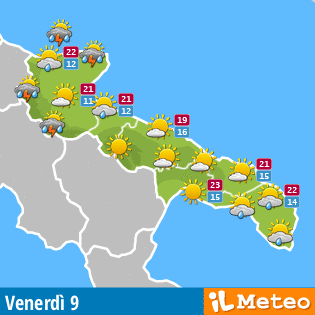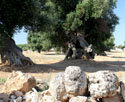Trani
Info Trani
-
Region:
Provincie:
Municipality:
CAP:
Area code:
Surface:
Population:
city hall:
-
Apulia
Barletta-Andria-Trani
Trani
76125
0883
103,41 Kmq
55.786
Via Tenente Luigi Morrico 2
Trani, a casket full of historical, artistic, religious and cultural treasures
Trani surely represents one of the most beautiful destinations of our Region, a casket full of historical, artistic, religious and cultural treasures. It is famous not only for its wonderful cathedral, on the sea, but also for the imposing castle and the elegant town.
According to the myth the town was founded by Tirreno, son of Diomede, around the 3rd – 4th century A.D. Between the 9th and the 12th centuries the city was dominated by the Byzantine empire before the Norman and then Swabian conquest. During this period, the emperor Federico II fortified the city building the castle in 1233. This was the age of greatest magnificence. Thanks to its strategic position, Federico II granted to the city some important administrative privileges. The castle and the whole city were the favourite residences of Manfredi, the emperor’s pet.
Nearly facing the imposing castle, stands one of the most beautiful cathedrals of Apulia. The building works started in 1099 on the previous Basilica of Santa Maria, after the canonization of a Greek 18-year-old boy (San Nicola Pellegrino) died in Trani in 1094, and finished in 1143. The tripartite salient façade is embellished by a monumental double flight of steps. The portal is adorned by wonderful bas-relieves, influenced by stylistic methods from the other side of the Alps, and shows bronze leaves made up of 32 panels, realized by Barisano from Trani at the end of the 12th century. Inside, visitors are amazed because of the presence of three churches, one above the other. At the level of the square there is the Basilica of Santa Maria, which is divided in three naves by 22 capital columns; from this church it is possible to enter the hypogeum dedicated to San Leucio, dating back to the 5th – 7th century. Through two stairways we reach the higher church, which shows three naves divided by coupled columns supporting the matronei, which overlook the central nave from three-mullioned windows. In the area of the altar it is possible to admire remains of a mosaic, which once covered the whole surface. Under the presbytery there is the crypt dedicated to San Nicola Pellegrino, finished in 1142: it is supported by valuable Greek marble columns with re-employed capitals.
It is worth visiting the 12th – century Romanesque church of Ognissanti (All Hallows), which is linked with the Templar presence, and the monastery of Colonna, built between the 11th and 12th centuries. The emperor Carlo V chose it as the seat of the Sacra Regia Udienza della provincia, in the 16th century, and it has been seat of the Provincia (province) until 1808.












